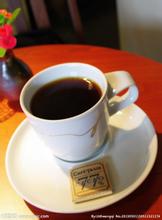Introduction to the characteristics of Papua New Guinea flavors
The top coffee beans in Papua New Guinea are as beautiful and precious as the country's national bird of paradise. As coffee in the country is widely grown in the highlands of 1300 to 1800 meters above sea level, coffee beans are plump and varied in taste, with pleasant acidity and fruit-like sweetness.
In Papua New Guinea, about 75% of coffee products come from small local farms. Many farms reclaim land in the forest, and some are in the depths of the forest, almost isolated from the rest of the world. Most of the locally grown coffee is grown under natural conditions because of the problems and high costs of transporting chemical fertilizers and pesticides to the farm.
The coffee production in Papua New Guinea is not very high, and its coffee beans are carefully washed Arabica beans. Generally washed coffee beans are full of bright fruit aromas, but do not have a strong acidity. It is characterized by a silk-like soft taste and excellent aroma, moderate acidity, is a relatively rare variety of high-alcohol and medium-acidity coffee, whether it is used to mix Italian coffee or general comprehensive coffee, can make up for the lack of sour coffee.
We got a coffee bean from the Butterfly Manor in Papua New Guinea, which is called the Butterfly Manor in China because there is a blue butterfly printed on the coffee bean sack.
This producing area Bunum-Wo is located in the western highlands of Pakistan, the coffee varieties here are transplanted from the Blue Mountain Coffee of Jamaica, because the overall environment here, such as climate and topography, is very similar to that of the Blue Mountains, and the high-quality environment coupled with top coffee tree species provides a healthy environment for growing good coffee on this special rugged highland with the equator, high altitude and great temperature difference between day and night.
Coffee farmers grow in a small manor, traditional way, and carefully deal with beans by washing, so the coffee beans in this region continue the taste of Jamaican Blue Mountain coffee, with tropical flower and fruit aromas of coffee, sweet and pure, the entrance is sweet, the throat is full of rhyme, it is very supple.

Important Notice :
前街咖啡 FrontStreet Coffee has moved to new addredd:
FrontStreet Coffee Address: 315,Donghua East Road,GuangZhou
Tel:020 38364473
- Prev

Introduction to the species of coffee beans in Indonesia
ANDONG SARI Anton sari Kartika/Bourbon hybridization, Kadika / bourbon mixture. Medium tall trees with slender leaves with red tips, coffee trees with the best shadows, usually big cherries. Producing areas: Aceh, Simalungun KOPI LUWAK civet coffee, Kopi Luwak civets' red coffee cherries, pulled poop coffee beans, expensive GAYO
- Next

Boutique Coffee beans Costa Rican Coffee Manor Flavor
Coffee is an important economic source of Costa Rica. It was introduced in 1808 and has been cultivated for 200 years. Costa Rica has 1x3 population invested in newly developed villa sarchi, newly developed villa sarchi and coffee-related industries. Colombians say that coffee has changed the country and enjoyed a rich environment, and coffee has indeed made an outstanding contribution.
Related
- Does Rose Summer choose Blue, Green or Red? Detailed explanation of Rose Summer Coffee plots and Classification in Panamanian Jade Manor
- What is the difference between the origin, producing area, processing plant, cooperative and manor of coffee beans?
- How fine does the espresso powder fit? how to grind the espresso?
- Sca coffee roasting degree color card coffee roasting degree 8 roasting color values what do you mean?
- The practice of lattes: how to make lattes at home
- Introduction to Indonesian Fine Coffee beans-- Java Coffee producing area of Indonesian Arabica Coffee
- How much will the flavor of light and medium roasted rose summer be expressed? What baking level is rose summer suitable for?
- Introduction to the characteristics of washing, sun-drying or wet-planing coffee commonly used in Mantenin, Indonesia
- Price characteristics of Arabica Coffee Bean Starbucks introduction to Manning Coffee Bean Taste producing area Variety Manor
- What is the authentic Yega flavor? What are the flavor characteristics of the really excellent Yejasuffi coffee beans?

